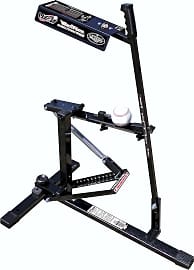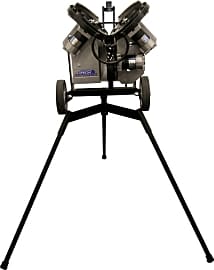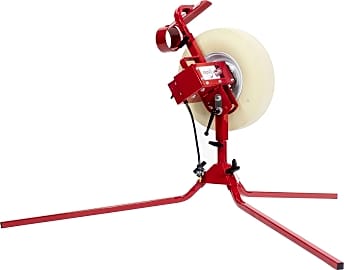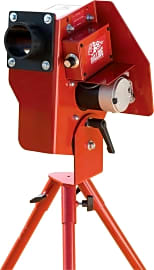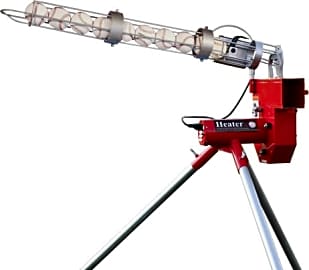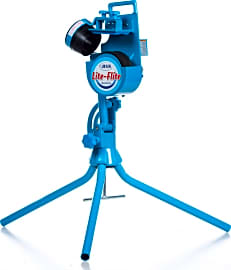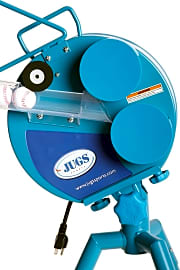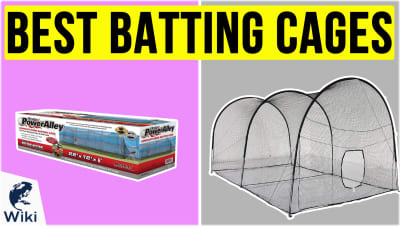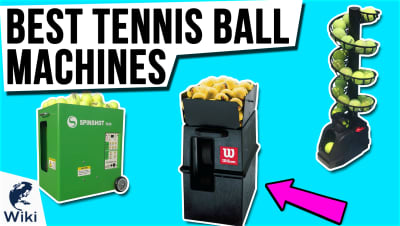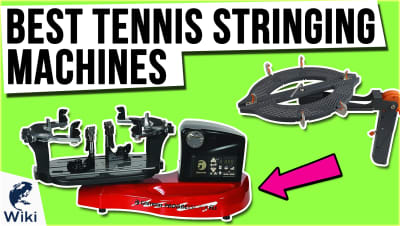The 10 Best Pitching Machines

This wiki has been updated 44 times since it was first published in April of 2015. You'll never make it to the majors if you can't get on base, and these pitching machines let you hone your swing until you're as dangerous as Williams or Gwynn. Some of these can throw fastballs, curves, and even knuckleballs, letting you experience the full range of pitches you're likely to encounter. A few can help with shagging flies and practice scooping grounders. When users buy our independently chosen editorial selections, we may earn commissions to help fund the Wiki.
Editor's Notes
April 17, 2019:
With its digital readout, clearly audible pitch alerts, and ability to handle leather balls, it was time for us to move the Zooka model previously slotted at number two into the top spot. That meant a demotion for the Sports Attack Junior Hack, which somewhat surprisingly dipped all the way to number four. At the end of the day, that's because the Black Slugger model at number two offers better value for its cost, and Sports Attack's other model, the Hack Attack, saw a promotion to number three on the strength of its build quality and incredible pitching speed. The other Slugger model we'd previously included has been sidelined by the company in favor of the aforementioned selection at number two, and it's been replaced on our list by the Heater Sports Autofeeder, which gives users ten specific speeds to choose from, where the old Blue Slugger was far less precise.
To Throw Or Not To Throw: That Is The Question
Portability and lightweight design are also important when traveling to different practice locations.
A pitching machine may seem detrimental to playing a game like baseball that involves many natural movements and instincts. But imagine that you're a pitcher for a major league baseball team and you have to prepare for practices on a daily basis. While it's important to develop your game and familiarity with different types of pitches, how do you prevent arm fatigue or injury from setting in before you've even stepped foot onto the field for an actual game?
Now imagine that you're up to bat and ready to hit one out of the park during a practice, but the pitcher is too tired to throw the ball with enough accuracy and speed to meet its mark and give you the best chance to hit the ball when it's in the strike zone. In either situation, a pitching machine can be a great help for preventing fatigue and ensuring an improved degree of in-game accuracy for the batter.
A pitching machine automatically delivers the ball to a batter in a variety of styles and speeds. The two most common types of pitching machines are the arm and circular wheel machines. With its overhand motion, the arm-action machine uses a bracket to mimic the natural movements of a live pitcher as he throws the ball to the plate. With its 1-3 wheels that spin in much the same way bike tires do, the circular wheel machine can be set up either vertically or horizontally, and allows the baseball to shoot out directly towards the hitter after being fed through its spinning wheels. The more wheels available on the machine, the easier it is to adjust it to mimic the different pitching styles.
Pitching machines accomplish several goals, including giving a batter the freedom to practice on their own. Many pitching machines are also set up within indoor or outdoor batting cages so that the hitter can teach their muscles to recognize patterns over time and through repetition of movement, while focusing on their skill without having to involve other members of the team. Think of a pitching machine as an extra coach. While the machine doesn't replace the live coach, it does assist in honing and developing one's skill over time.
The pitching machine supports a range of skill levels, including youth, high school, collegiate, and professional leagues. For youth leagues, it's a safe and effective training tool to familiarize young players with routine on the field. Pitches up to 50 mph are usually sufficient for those starting out. Portability and lightweight design are also important when traveling to different practice locations.
For the remaining skill levels, speed and variety are important as players develop their abilities and become more clever in their approach than at the basic level. Lite ball and combo pitching machines have also gained popularity with both baseball and softball players. The lite ball machine is more heavily focused on developing one's swing and hand-eye coordination through the use of lightweight balls, whereas the combo machines include detachable legs and adjustable plates to be used for both baseball and softball purposes.
The Right Pitch For A Homerun
Speed and accuracy will assist you in investing in the right pitching machine. For professional players, a top speed of 100+ mph is pretty close to what you'd actually experience from a real pitcher on the baseball diamond. That's valuable to have, but make sure the speed is adjustable.
While baseball is a game of speed and precision, using a pitching machine only for its speed won't reflect a real-life, in-game experience. Strategy is equally important, so the machine must have a useful targeting system for training the batter to recognize pitch types and understand how best to approach the swing. Although a batter isn't going to have much time to stop and think about a 100-mph pitch, the machine can help to train their eye to recognize a pitch and develop an instinct to hit the ball appropriately when the time comes.
Professional-quality, multi-wheel models also have adjustable legs, pitch angle controls, pivoting heads, and throwing wheel dials for programming the unit to deliver a variety of pitch styles ideal for hitting fly balls, ground balls, and pop-ups.
A Brief History Of The Pitching Machine
The original pitching machine was invented in 1897 by Charles Howard Hinton, a mathematics instructor and science fiction writer at Princeton University. While its gunpowder-fueled power raised concern for its safety level with players, it was still capable of throwing pitches at variable speeds to mimic realistic field scenarios. Hinton also introduced the device to the University of Minnesota where he worked as an assistant professor until 1900.
The arm-type pitching machine was designed by Paul Giovagnoli in 1952.
The arm-type pitching machine was designed by Paul Giovagnoli in 1952. Its use of a metal arm mounted to a large gear would simulate the motions of a real pitcher. The mass production of this design began in 1976, with the founding of Master Pitching Machine.
Over the course of several decades, the pitching machine became more sophisticated and attuned to different pitching styles. With sophistication also came the ability to propel a baseball in different ways, including by mechanized arms, using compressed air for additional speed, and spinning wheels. These different techniques get players accustomed to those kinds of pitches they are likely to see in the game so that they're ready for almost anything.


